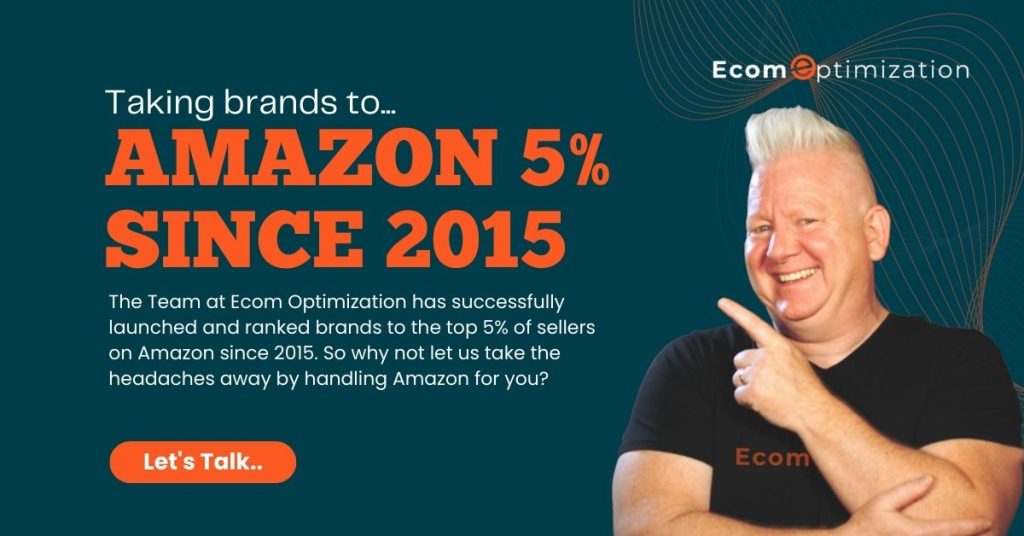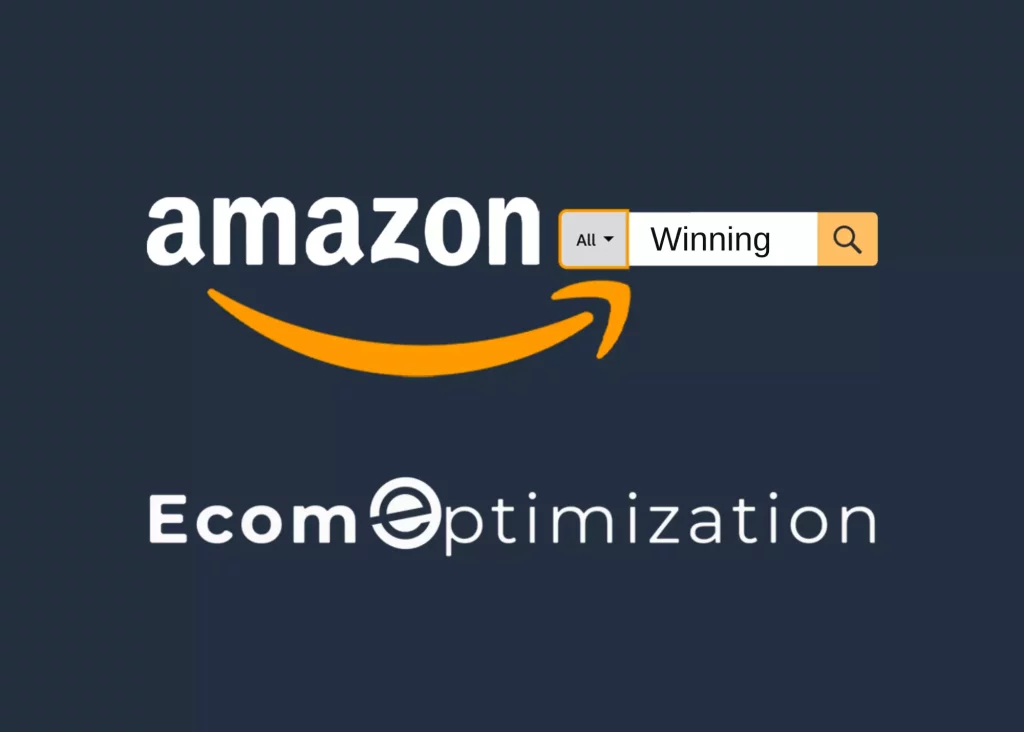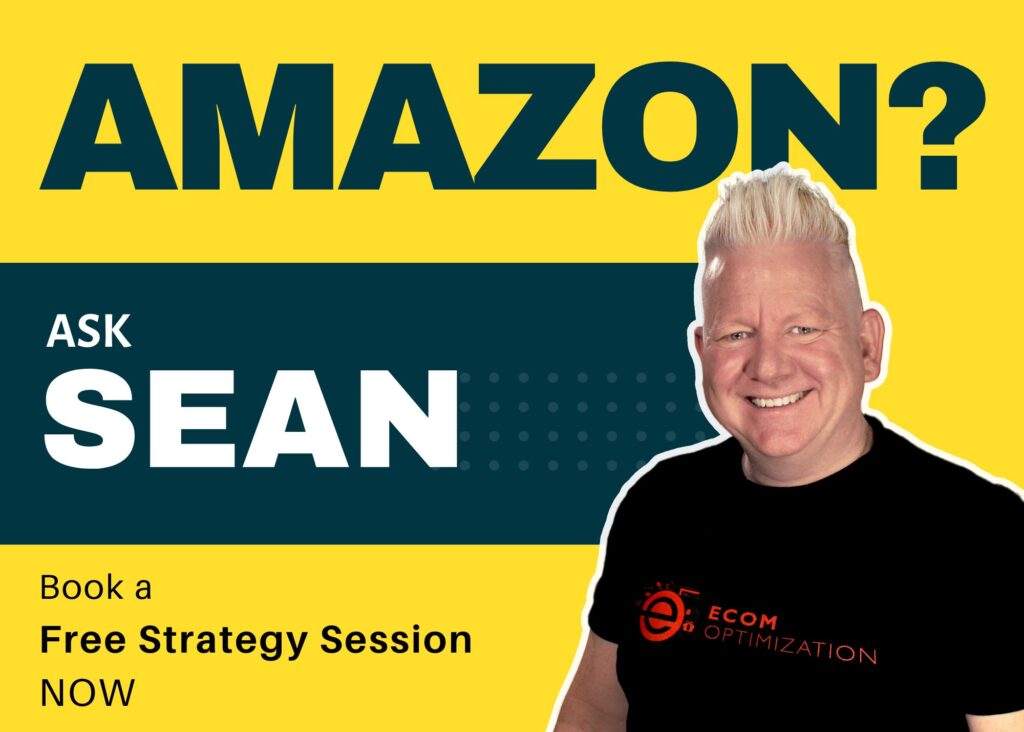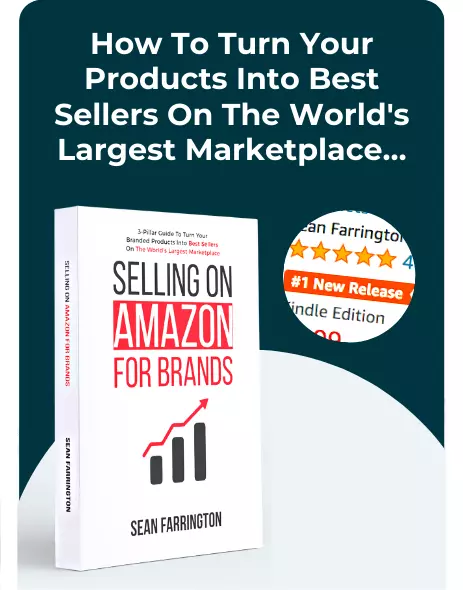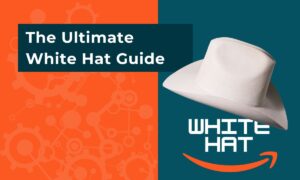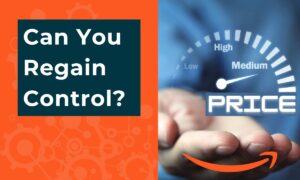The Dark Side Of Amazon Aggregators – Is Your Future Brighter By Handing Over Your Brand?
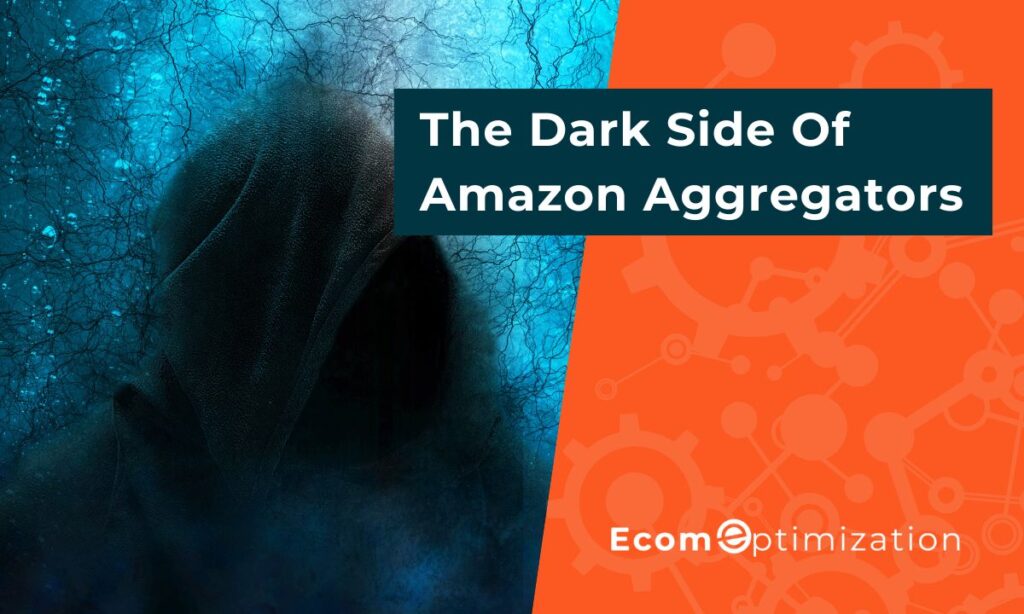
In recent years, Amazon aggregators have been gobbling up smaller Amazon brands in an effort to capitalize on the booming e-commerce industry and the dominance of Amazon’s marketplace.
These aggregators, led by giants like Thrasio, Elevate Brands, Berlin Brands Group, Razor Group, Perch, and Heyday, have made headlines with their rapid growth, net profit, massive funding rounds, and ambitious acquisition strategies.
However, recent developments within the industry have sparked debates about the long-term viability of this business model.
Jump To Section
Thrasio Spooked The Market - And Raised Fears For Brand Owners
Thrasio’s meteoric rise culminated in a lavish event organized in Cabo, Mexico, where around 40 e-commerce entrepreneurs were treated to workshops, activities, and an all-expenses-paid luxury experience in an effort to expand Thrasio’s number of SKUs purchased from Private Label brands.
However, just a few months later, Thrasio surprised the industry by laying off staff and appointing a new CEO, Greg Gilley, a former executive of Airbnb and Amazon.
This abrupt retrenchment sent shockwaves through the tight-knit aggregator startup community, raising concerns about the stability and direction of the industry.
Why All The Buzz About Amazon Seller Aggregators?

With millions of sellers and billions in profits, Amazon reigns supreme as the largest online marketplace. So, it’s no wonder that entrepreneurs are flocking to the platform to build their businesses.
Along with Amazon’s growth is a new trend taking the Amazon ecosystem and ecommerce companies by storm – the rise of Amazon Seller Aggregators.
These aggregators, also known as roll-up companies, are rapidly buying up small and medium-sized Amazon businesses with a good number of SKUs that currently sell on the Amazon marketplace.
By using their background as marketing or supply chain experts, they salivate over boosting Amazon sales in exchange for offering entrepreneurs an opportunity to cash out and gain access to greater resources.
The Explosive Growth of The Amazon Aggregator Business Model

Over the past couple of years, more than 60 Amazon aggregators have emerged (many much smaller than Thrasio, Elevate Brands, or Berlin Brands Group). Collectively they have raised billions in funding to fuel their acquisition spree.
These companies take over established private-label brands by buying out the entrepreneurs who started them, sometimes for millions of dollars. Once acquired, aggregators leverage their large-scale software and marketing solutions to boost the sales of their growing brands group.
The allure of aggregators has attracted attention from both sellers and investors. At events like the annual Prosper Show in Las Vegas, aggregators gather to entice new acquisitions.
The Prosper show has seen a significant increase in attendance, with aggregators like Thrasio, Heyday, and Perch even securing exhibitor space.
The market for most aggregators is booming, with at least 69 companies based in a dozen countries collectively raising $7 billion in capital since April of last year.
Valuations and Challenges
While Amazon FBA aggregators such as Thrasio, Elevate Brands, and Berlin Brands Group have enjoyed immense success during the pandemic, the question arose: are their valuations justified?
The high valuations of these companies, including Thrasio’s $5.5 billion post-money valuation, have come under scrutiny.
The aggregator model faces challenges in finding synergies among the diverse brands group it manages. With each brand having its own manufacturing and operational setup, creating meaningful cost savings and operational efficiencies becomes a complex task.
The Aggregator Pitch To Acquire Brands Is Tempting

Aggregators offer sellers an attractive proposition. By selling brands to an aggregator, entrepreneurs can cash out and gain access to a wealth of resources and expertise.
These aggregators bring venture capitalists within reach of everyday Amazon sellers, providing capital, technology, talent, and expanded market reach.
It’s seemingly a win-win situation where sellers can exit their business and their brand can benefit from enhanced marketing and data power.
The Aggregator Baloon: Funding and Growth
Amazon FBA aggregators have attracted significant attention and for good reason. These companies have managed to raise billions of dollars in equity and debt funding, with Thrasio leading the pack by raising over $3 billion alone.
The pandemic proved to be a catalyst for their balooning growth, as the e-commerce industry experienced a surge in demand.
The aggregator model, which involves acquiring existing Amazon sellers and brands and optimizing their operations, seemed like a promising strategy to capitalize on this trend.
The Dwindling Power of Amazon Brand Aggregators

The downfall of FBA aggregators can be attributed to several key factors.
Firstly, the decline in e-commerce sales in 2022 shattered the pricing power of aggregators. With a decrease in demand, they could no longer raise prices or maintain high-profit margins.
This shift in the market dynamics hit aggregators hard, leaving them with low profitability and diminishing returns.
Debt Financing: A Double-Edged Sword
One of the driving forces behind the success of FBA aggregators was debt financing. However, this financing method has become riskier as interest rates have risen. The debt burden on aggregators has increased, and lenders are pressuring them to repay their loans.
The high cost of debt, coupled with shrinking profit margins, has created a precarious situation for many FBA aggregators.
The Strategies of Amazon Aggregators
Amazon aggregators employ various strategies to maximize the growth and profitability of the brands they acquire.
While they may allow acquired brands to retain the original brand name and loyal customer base, they then throw that brand into a marketing machine in an effort to leverage their marketing and data capabilities, with hopes of growing the customer base and boosting profits.
To streamline the management of multiple brands, aggregators often develop software solutions that automate processes such as listing optimization, competitor monitoring, and more.
These technologies enable them to efficiently scale their operations across hundreds of brands and make data-driven decisions to improve performance.
The Dark Side of The Acquisition Process

Selling to an Aggregator does have a dark side. While the aggregator model offers attractive benefits for many sellers, it’s important to consider the potential dangers involved.
Here are a few risks to be aware of:
Brand Dilution
Once a brand is acquired by an aggregator, the original founder may have limited control over the ecommerce brands direction and decision-making.
The aggregator may make changes that dilute the brand’s identity or deviate from the original vision. This can lead to a loss of customer loyalty and negatively impact the ecommerce brand’s reputation.
Less Control and Autonomy
Selling to an aggregator means relinquishing control over the brand and its operations.
The aggregator may implement changes to pricing, marketing strategies, or product offerings without the founder’s input or approval. Sellers who value their autonomy and decision-making power may find this loss of control challenging.
Cultural Clash
When a smaller brand becomes part of a larger aggregator, there can be a clash of cultures and values.
The original ecommerce company may have had a unique culture that contributed to its success.
However, the aggregator’s new culture and way of conducting business may not align with the founder’s vision. This misalignment may lead to conflicts and dissatisfaction among the staff left behind in the wake of the acquisition.
Integration and Transition Challenges
The process of integrating the acquired brand into the aggregator’s operations can be complex and challenging.
There may be difficulties in aligning systems, processes, and strategies. If not managed properly, this transition period can seriously disrupt operations and impact the brand’s performance.
Financial Considerations
While aggregators offer sellers an opportunity to cash out, the financial terms of the acquisition must be carefully evaluated.
Sellers should thoroughly analyze the valuation, payment structure, earn-outs, and any potential ongoing financial obligations. It’s crucial to ensure that the financial arrangement aligns with the seller’s goals – but most importantly, aligns with expectations.
Uncertainty and Future Market Conditions
The aggregator market is still relatively new, evolving rapidly, and (As evidenced by Thrasio) showing signs of instability.
There is uncertainty about its long-term sustainability and potential market saturation.
Sellers need to carefully assess the aggregator’s track record, financial stability, and future plans to ensure they are aligning themselves with a reliable partner.
Optimization vs. Fulfillment Centers
One intriguing aspect of the aggregator model is its focus on optimizing operations.
While some speculated that aggregators could leverage their account management and supply chain strenghts to negotiate better deals with Amazon and reduce fulfillment fees, the reality is that aggregators rely heavily on Amazon’s fulfillment infrastructure and no negotiations for reduced fees are likely in the forseeable future.
Additionally, ground-up design and development of their own fulfillment capabilities would require substantial investment and further complexity. This means that since Amazon will still be a major player in any Aggregator’s future, there is really no insider advantage that Aggregators have to offer.
To mitigate these risks, sellers considering selling to an Amazon Aggregator should conduct thorough due diligence on potential aggregators. They should review the aggregator’s reputation, track record, and communication with sellers. Seeking legal and financial advice is also crucial to fully understand the terms and implications of the whole acquisition process.
The Future of Amazon Aggregators: Questions and Uncertainties
The aggregator industry, once seen as a promising venture, now faces crucial questions about its future.
The recent setbacks experienced by Thrasio, combined with concerns about high valuations and the ability to create synergies among acquired brands, have cast a shadow of doubt.

Can the aggregator model continue to thrive and scale sustainably?
What changes and adaptations are necessary to overcome the current challenges?
These uncertainties loom large over the industry, and only time will reveal the answers.
Alternatives For Selling To An Aggregator
If any of the above have you thinking that selling to Amazon aggregators may not align with your goals for your brand, or if you want to explore alternative options, there are viable alternatives to consider:
Doubling Down On Your Brand Development
Instead of selling your brand, choose to continue growing and scaling it – but offload the day-to-day Account management to a proven Amazon Account Management Agency.
This option allows you to retain full control over your brand’s direction, decision-making, and operations while offering the time freedom that you may be searching for.
Partnering with a Distributor
Collaborating with a distributor can be an alternative to selling to an aggregator.
A distributor can help expand your brand’s reach by leveraging their existing distribution network and expertise.
They can also handle aspects like logistics, warehousing, and order fulfillment, allowing you to focus on product development, brand growth, and marketing.
Seeking Strategic Partnerships
Exploring strategic partnerships with complementary, quality brands in your industry may be a mutually beneficial alternative to selling off your brand.
By joining forces with another brand that shares similar values, you can leverage each other’s strengths, share resources, and tap into each other’s customer base.
This can help expand your market reach and increase brand visibility without losing control over your business.
Direct-to-Consumer (D2C) Model
Embracing a direct-to-consumer approach allows you to bypass traditional retail channels and sell directly to your customers.
This option gives you greater control over your brand’s messaging, pricing, and customer experience. Building an engaging online presence, investing in marketing, and optimizing your e-commerce platform is key to success in the D2C model.
Licensing or Franchising
Instead of selling your brand outright, consider licensing or franchising opportunities.
Licensing allows you to grant others the right to use your brand in exchange for royalty payments, while franchising involves expanding your business through independently owned and operated franchise locations.
These models allow you to retain brand control while benefiting from the expansion and revenue generated by licensees or franchisees.
Private Equity or Venture Capital Investment
Why not take a page from the Aggrigator playbook?
If you’re seeking growth capital without giving up complete control, securing investment from private equity firms or venture capitalists is an option.
This allows you to raise funds for scaling your business while retaining ownership. However, it’s important to carefully evaluate potential investors and ensure alignment in terms of vision and long-term objectives.
Each alternative has its own set of advantages and challenges, so it’s crucial to assess which option aligns best with your brand’s goals, resources, and growth strategy.
Remember, the right path for your brand will depend on your unique circumstances and long-term vision.
Amazon Aggregator Success Stories and Challenges

To be fair, several stories have emerged from Amazon Seller Aggregators who scale brands like Angry Orange. This pet odor eliminator brand experienced tremendous growth under the ownership of Thrasio.
Thrasio acquired Angry Orange for $1.4 million in 2018 when it was making over $2 million in annual revenue. Since then, the brand’s revenue has skyrocketed to $16.5 million, thanks to Thrasio’s strategic improvements.
In spite of the past record of successes, future challenges exist in this fast-paced industry. The Amazon marketplace is known for constantly changing rules, fees, and protocols. Navigating these complexities can be daunting at scale.
Additionally, with the influx of aggregators, the costs of doing business on Amazon are expected to rise. Increased competition for brands and advertising space could make it more challenging for aggregators to maintain their historically profitable growth.
The Future of Amazon FBA Businesses: A Window of Opportunity

While the rise and fall of FBA aggregators may signal a changing tide in the Amazon FBA ecosystem, it also opens doors of opportunity for motivated entrepreneurs and existing sellers.
By focusing on niche markets, utilizing established platforms, embracing flexibility, building authentic brands, and emphasizing customer relationships, Amazon FBA businesses can thrive independently in this evolving landscape.
Opportunity 1: Niche Market Expansion
As FBA aggregators face challenges, there is an opening for sellers to explore niche markets within the Amazon ecosystem. By identifying underserved product categories, market niche, or customer segments, sellers can capitalize on untapped opportunities and build successful
Amazon businesses with less competition from aggregators.
Personal care brands
Consumer electronics brands
Exercise equipment brands
Latin American brands
European Amazon brands
Opportunity 2: Leveraging Established Platforms
Amazon’s FBA program offers a solid foundation for entrepreneurs to establish and grow their Amazon businesses.
By leveraging the existing infrastructure, logistics network, and customer base of Amazon, sellers can focus on product sourcing, branding, and customer experience to differentiate themselves in the market.
This allows for direct control over business operations and reduces dependency on third-party aggregators.
Opportunity 3: Enhanced Flexibility and Agility
Operating independently as an Amazon FBA seller provides greater flexibility and agility in responding to market dynamics.
Unlike aggregators burdened by internal complexities and debt obligations, individual sellers can quickly adapt their strategies, pricing, and product offerings based on changing market conditions. This agility enables sellers to seize emerging opportunities and navigate challenges more effectively.
Opportunity 4: Building Authentic Brands
An Amazon seller acquisition company often purchases established Amazon FBA brands, which may result in a loss of authenticity and connection with customers.
As an independent Amazon FBA seller, there is an opportunity to build and nurture authentic brands with a unique identity and value proposition.
By focusing on building customer trust, cultivating brand loyalty, and delivering exceptional products and experiences, sellers of Amazon FBA brands can create lasting relationships and stand out in the marketplace.
Opportunity 5: Emphasizing Customer Relationships
In the face of growing competition and challenges within the FBA aggregator space, sellers can differentiate themselves by prioritizing customer relationships.
By providing excellent customer service, engaging with buyers through social media and email marketing, and actively seeking feedback, sellers can build a loyal customer base and cultivate positive word-of-mouth. This focus on customer relationships fosters long-term sustainability and growth.
Conclusion
The emergence of Amazon Seller Aggregators has disrupted the e-commerce landscape, offering entrepreneurs a lucrative exit strategy and providing Amazon FBA brands with the resources and expertise needed for rapid growth.
With the market for Amazon aggregators booming, it’s clear that this trend is here to stay. As the industry continues to evolve, expect to see new challenges and the potential for further innovation in this hot emerging market of Amazon Seller Aggregators.
Remember, it is essential to seek professional advice and carefully evaluate the specific terms and conditions of any agreement before making a decision to sell your brand to Amazon aggregators.
That said, the future holds promise for those who are willing to adapt, innovate, and seize the opportunities that lie ahead.
Amazon businesses with less competition from aggregators.
Personal care brands
Consumer electronics brands
Exercise equipment brands
Latin American brands
European Amazon brands
Frequently Asked Questions (FAQs)
Q: What is an Amazon Seller Aggregator?
A: An Amazon Seller Aggregator, also known as a roll-up company, is a business that acquires small and medium-sized brands that sell their products on Amazon’s marketplace.
These aggregators aim to streamline operations, boost sales, and grow the acquired brands.
Q: Why are Amazon Seller Aggregators gaining popularity?
A: Amazon Seller Aggregators are gaining popularity due to the success of Amazon’s marketplace and the allure of cashing out for sellers.
Aggregators offer entrepreneurs an opportunity to sell their brand while gaining access to capital, technology, and marketing expertise.
Q: Why have Amazon aggregators received significant funding?
Amazon aggregators have attracted substantial funding due to the tremendous growth potential of the e-commerce industry, particularly during the pandemic.
Investors view aggregators as vehicles to consolidate and optimize the operations of multiple other ecommerce brands, creating synergies and unlocking value.
Q: How do Amazon Aggregators grow the brands they acquire?
A: Amazon Aggregators leverage their brand-building marketing and data capabilities along with supply chain management to grow the brands they acquire.
They employ software solutions for listing optimization, competitor monitoring, and other data-driven strategies to drive sales and improve brand performance.
Q: Can Amazon aggregators reduce fulfillment fees and build their own infrastructure?
While aggregators may aim to negotiate better deals with Amazon, reducing Amazon fulfillment fees is not a reality.
Plus, the complexity and scale of Amazon’s fulfillment operations make it impractical for most aggregators to replicate without substantial investment.
Q: Are there any challenges in the Amazon Aggregator industry?
A: While the Amazon Aggregator industry has seen significant success, challenges exist. The ever-changing rules and fees on the Amazon platform can be complex to navigate.
Additionally, the influx of aggregators may lead to increased competition and rising costs of doing business on Amazon.
Q: What is the long-term sustainability of the aggregator market?
A: The long-term sustainability of the aggregator and market niche is still uncertain. However, some companies in the industry are preparing for potential initial public offerings (IPOs), indicating a level of confidence in the future.
Q: What are the potential dangers of selling to Amazon aggregators?
A: While selling to Amazon aggregators can offer benefits, there are also potential dangers to be aware of:
Loss of Control
When you sell your brand to an aggregator, you relinquish control over the future direction, decision-making, and operations of your Amazon business.
The aggregator takes over the management and strategic decisions, which may not align with your original vision.
Brand Dilution
Aggregators often acquire multiple brands, and there is a risk of your brand getting lost or diluted within its portfolio.
Your brand’s uniqueness and identity may be overshadowed or compromised, affecting its long-term growth potential.
Impact on Brand Reputation
Aggregators may prioritize short-term financial gains over maintaining the integrity and reputation of individual brands.
If the aggregator engages in questionable business practices or fails to meet customer expectations, it can reflect negatively on your brand, even if you are no longer directly involved.
Lack of Transparency
Some aggregators may not provide sufficient transparency regarding their operational processes, marketing strategies, or financial reporting.
This can make it difficult for you to assess the performance and growth of your brand within the aggregator’s portfolio.
Profit Sharing and Valuation
The financial terms of selling to an aggregator, such as profit-sharing arrangements and valuation methods, may not always be favorable to the seller.
It’s crucial to carefully evaluate the terms of the deal and consider potential long-term implications.
Limited Growth Potential
While an aggregator can provide resources and expertise, the growth potential of your brand may be limited within its ecosystem.
Expansion strategies, marketing efforts, and investment priorities may not align with your vision for your brand’s future.
Q: How can I mitigate the dangers of selling to an Amazon aggregator?
A: If you still choose to sell to an Amazon aggregator despite the potential dangers, you can take certain steps to mitigate the risks:
Thorough Due Diligence
Conduct extensive research on the aggregator’s track record, reputation, and the brands they have acquired. Seek references from other sellers who have sold to the same aggregator and evaluate their experiences.
Legal and Financial Advice
Consult with legal and financial professionals experienced in mergers and acquisitions to help you navigate the complexities of the selling process. They can review contracts, negotiate terms, and provide guidance on protecting your interests.
Retain Brand Control
Negotiate for certain provisions in the agreement that allow you to retain some level of control or influence over key brand decisions, such as marketing strategies or product development.
Post-Sale Support
Clarify the level of support and involvement you will have after the sale. Consider including transition assistance, ongoing consultation, or a non-compete clause to protect your brand’s interests.
Protect Intellectual Property
Ensure that the agreement clearly outlines the protection and rights of your brand’s intellectual property, including trademarks, patents, and copyrights.
Evaluate Alternatives
Assess alternative options, such as building your own brand, partnering with distributors, or exploring strategic collaborations, to determine if they align better with your long-term goals and priorities.
Q: What are the viable alternatives to selling to an Amazon aggregator?
A: If you are considering alternatives to selling your business to an Amazon aggregator, here are some viable options to explore:
Independent Growth: Instead of selling your Amazon business, you can choose to continue operating independently and focus on growing your brand organically. This approach allows you to maintain full control over your business and make decisions aligned with your vision.
Strategic Partnerships: Seek out strategic partnerships with distributors, retailers, or complementary brands. Collaborating with established partners can help expand your reach, access new markets, and leverage their existing customer base, without giving up ownership of your brand.
Licensing or Franchising: Consider licensing your brand or franchising your business model to interested entrepreneurs or ecommerce companies. This allows you to expand your brand’s presence without shouldering the full responsibility of managing operations in every location.
Private Equity or Venture Capital Investment: If you require capital to fuel growth, you can explore options like private equity or venture capital investment. These investors provide funding in exchange for an ownership stake in your Amazon business but typically offer more flexibility and control compared to selling to an aggregator.
Direct-to-Consumer E-commerce: Develop your own direct-to-consumer e-commerce platform outside of Amazon. Building a strong online presence, investing in marketing, and optimizing your website for conversions can help you establish a direct relationship with customers and reduce dependence on third-party platforms.
International Expansion: Explore opportunities for expanding your brand internationally. Selling in new markets can help diversify your revenue streams and increase your brand’s exposure. You can either manage international operations yourself or partner with distributors in target countries.
Q: How do I determine the best alternative for my business?
A: Choosing the best alternative to an Amazon aggregator requires careful evaluation of your business goals, resources, and market dynamics. Consider the following factors:
Long-term Vision: Assess whether the alternative aligns with your long-term vision for your brand and business.
Control and Independence: Evaluate how much control and independence you are willing to retain over your brand and decision-making processes.
Growth Potential: Analyze the growth potential of each alternative and determine if it aligns with your desired pace of expansion.
Financial Considerations: Consider the financial implications, such as investment requirements, revenue-sharing models, and potential return on investment.
Operational Capacity: Evaluate your capacity to manage and scale the chosen alternative effectively. Assess whether you have the resources, expertise, and infrastructure in place to support the chosen path.
Market Opportunities: Identify market opportunities, trends, and consumer demands that can be leveraged by the chosen alternative.
Q: What does Thrasio’s recent layoff and leadership change signify?
Thrasio’s retrenchment, including layoffs and the appointment of a new CEO, has raised concerns about the stability and direction of the aggregator industry. It highlights the need for reassessment and adaptation in a rapidly evolving market.
Q: What led to the layoffs and internal struggles of Thrasio?
A: Thrasio, the leading FBA aggregator, faced internal chaos due to over-hiring and a lack of long-term planning. The decline in profitability and mounting debt pressures contributed to significant layoffs and CEO changes.
Q: Why are FBA aggregators facing challenges now?
A: FBA aggregators are facing challenges primarily because of the decline in e-commerce sales, which has impacted their pricing power and profit margins. Additionally, rising interest rates have increased their debt burden, making it harder to sustain operations.
Q: Will other FBA aggregators face similar issues?
A: It is highly likely that other FBA aggregators will encounter similar challenges. Thoracios serves as a warning sign for the industry as a whole, and many other aggregators may struggle to sustain their operations.
Take the Next Step Toward Unlocking The Power Of Amazon
If you’re looking to get more money from your Amazon efforts with less hassle, hiring an expert is your best bet. An Amazon Account Management Agency will work with you on so much more than just building your brand.
Daily management covers optimization of your ad campaigns, decreasing your advertising cost of sales (ACoS), and boost Sales Conversions, all while taking advantage of Amazon’s highly-effective Enhanced Marketing to grow Organic Attraction.
In other words, if you sell on Amazon (or want to) you can’t afford to not be leveraging experienced Account managers to your benefit.
ECOM OPTIMIZATION Amazon Account Management can help you to build an effective strategy that aligns with your unique brand needs.
Using a hands-on, human-led approach, we’ll help you get more from your Amazon sales channel, so you can enjoy more growth for your business in less time.
Ecom Optimization Amazon Account Management is here to Help
Ecom Optimization is a full-service Amazon Account Management Agency. Our team consists of specialists in all areas of Amazon optimization and management.
When you look at the many ways that Ecom Optimization Account Management can help you grow your brand on Amazon, you’ll see why selling on Amazon becomes headache-free with Ecom Optimization:


